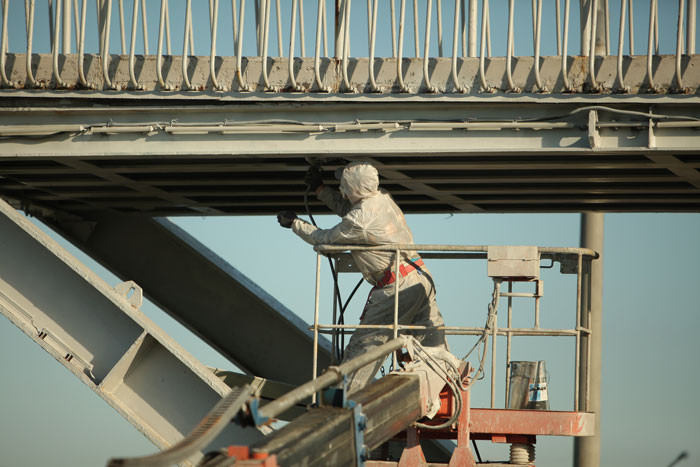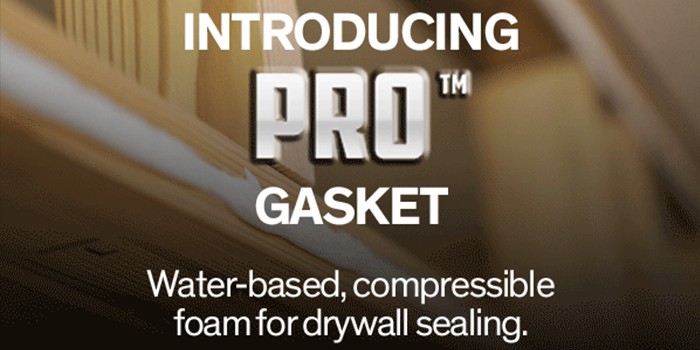Stronger Spans


Spray Foam Magazine – Winter Issue 2024 – From flash floods to forest fires, the earth is suffering from what some experts are saying are the effects of climate change. How are these factors impacting bridges? The Spray Foam Magazine team went to investigate.
Fluctuations of extreme temperatures, flooding, and general wear like corrosion are hastening the fatigue of bridges, resulting in them buckling and cracking. Constructed primarily of reinforced concrete, often felt to be one of the best sources of construction material, is being “attacked” by the elements. This occurrence derives from water, salts, and chemical contamination that corrode the reinforcing rebar and steel. This causes slight to massive spalling of the concrete.
This summer, the Third Avenue Bridge, connecting the Bronx to Manhattan over the Harlem River, got stuck in the open position. The engineers and officials concluded thermal expansion from the intense summer heat expanded the metal, causing the malfunction. Eventually, the situation was remedied, but not before the incident caused major traffic delays.
The American Association of State Highway and Transportation Officials (AASHTO) LRFD Bridge Design Specifications outline a 75-year bridge design service life as the standard expectation. However, due to the intensity of extreme weather, regular inspections and bridge repairs should be implemented. A quarter of America’s bridges were built pre-1960, with many needing repairs. Bridges are classified in good, fair, or poor condition based on their inspection ratings and definitions from the U.S. Department of Transportation. Roughly 221,800 bridges in the United States currently need major repair or replacement.
The nation’s infrastructure, from the highways to runways and railways, is deteriorating quickly, and it is the bridges that could potentially cause major problems. “With bridges, you’re working with infrastructure that may have been planned, designed, and built decades ago,” according to Transportation Secretary Pete Buttigieg. “It’s one of the forms of infrastructure that takes the longest to update or refresh. And yet we’re seeing those vulnerabilities everywhere across the country.”

The U.S. Transportation Secretary announced $5 billion is allocated toward repairing, restoring, or replacing 13 bridges across 16 states.
For the past 20+ years, the polyurea spray elastomeric coating technology has been successfully used in a variety of bridge deck waterproofing application areas. This includes restoration of existing traffic bridges, new bridge construction and rail bridge deck application areas. Substrates for application includes concrete as well as steel decks found mostly in rail bridge deck applications. The process involves a complete system including proper surface preparation and repair. This also includes a quality primer system application of roughly 80 mils (2mm minimum) of a qualified aromatic polyurea system, followed by a special aggregate filled topcoat which allows the adhesion of the asphalt on traffic bridge deck applications. The polyurea system waterproofs the concrete deck, inhibits the corrosive property of salt contact with the deck, allows for crack bridging characteristics in the deck and passes extensive freeze-thaw cycle testing. In the case of rail bridge decks, these polyurea systems have also passed the extensive American Railway Engineering and Maintenance-of-Way Association (AREMA) Ballast Test for impact and damage resistance, while also offering some sound damping qualities in the steel decks.
A study in the journal PLOS ONE looks at deterioration issues in bridges, with expansion joints being one of the most common and costly failures. The joints connect the two bridge spans and they fail due to an accumulation of debris and dirt in the joint. Expansion joints are small components in a bridge’s superstructure; however, their malfunction can result in major structural problems. With the added issue of thermal stresses, the demand on structural elements could be further intensified. These factors are also expected to increase if future temperatures rise.
The effects of climate change on infrastructure are yet to be fully investigated and there are currently no studies relating to the integrity of the main load-carrying girders. The PLOS study aims to measure the effect of clogged joints and climate change on the failure of the superstructure of a class of steel bridges around the U.S. They surprisingly find that potentially most of the main load-carrying girders analyzed, could reach their ultimate capacity when exposed to service load and future climate changes.
The U.S. government started to react to this issue in 2021 by passing the bipartisan infrastructure law, known as the Infrastructure Investment and Jobs Act. This allocated $110 billion for roads, bridges, and other transportation needs. As recent as July 2024, U.S. Transportation Secretary Pete Buttigieg announced allocating $5 billion toward repairing, restoring, or replacing,13 bridges located across 16 states in the U.S.
Buttigieg said in a press statement back in July, “For too long America let bridges fall into disrepair, which leaves people less safe, causes disruptions in our supply chains, and costs people time and money. However, to rebuild or repair bridges takes time and these bridges need to be repaired now before disaster strikes.”
Substantial precipitation is also linked to climate change, with the occurrence of “bridge scour,” which is the erosion of soil sediment around bridge foundations. Studies show this to be the leading failure in bridges in the United States.
Geotechnical polyurethane foam can help level between a road and a bridge, soil stabilization, cavity filling, bridge scour, and infrastructure restoration.
In 2022, a 30-foot section of bridge on the California-Arizona border of Interstate 10, was swept away during record rainfall. This bridge is along a major trucking route from Phoenix to the port of Los Angeles, with the closure estimated at $2.5 million per day to trucking costs because of delays and additional fuel.
Polyurea coatings are increasingly being used in infrastructure projects, including bridge construction and maintenance, due to their unique properties that enhance the durability and resilience of structures. Here’s how polyurea can help strengthen bridges and prevent potential disasters:
- Waterproofing and Corrosion Protection – Bridges are constantly exposed to harsh environmental conditions, including water, humidity, and chemical contaminants. Over time, this exposure can lead to corrosion and degradation of steel and concrete components. Polyurea coatings provide an impermeable barrier, preventing water and chemicals from reaching the underlying materials. This helps protect the structural integrity of the bridge, reducing the risk of corrosion-related failures.
- Crack and Joint Sealing – Polyurea has excellent elongation properties, meaning it can stretch and return to its original shape without cracking. When applied to bridge joints and cracks, it effectively seals these vulnerable areas, preventing water ingress and freeze-thaw cycles that can cause further damage to the structure. This sealing reduces stress on the bridge’s components, maintaining its strength over time.
- High Impact and Abrasion Resistance – Bridges face significant stress from constant vehicle traffic, environmental factors, and even natural disasters like earthquakes or floods. Polyurea coatings offer high impact resistance, protecting the bridge from mechanical damage. This protection is particularly important for bridges in seismic zones, where polyurea can help prevent catastrophic failures during earthquakes by absorbing and dispersing impact forces.
- Fast Application and Cure Time – Polyurea coatings can be applied quickly and cure rapidly, making them ideal for infrastructure projects where downtime must be minimized. This quick application process ensures that bridges can be protected and reinforced without long construction delays, reducing the time they are vulnerable to damage during repairs or maintenance.
- Flexibility and Durability – Bridges undergo constant movement due to traffic loads, temperature changes, and shifting foundations. Polyurea’s flexibility allows it to move with the structure, preventing cracks and failures caused by structural stress. Its durable, long-lasting protection ensures that the bridge can withstand both everyday wear and extreme conditions for years.
- Resistance to Chemical Attacks – In urban areas, bridges often face exposure to pollutants, de-icing salts, and other chemicals that can accelerate deterioration. Polyurea coatings are resistant to chemical attacks, protecting steel reinforcements and concrete surfaces from degradation. This is especially important in areas with harsh winter conditions, where de-icing salts are used frequently.
- Enhanced Structural Integrity – By creating a protective, flexible, and durable membrane around the bridge’s structural components, polyurea helps to reinforce and preserve its load-bearing capacity. This reinforcement reduces the risk of structural failure, especially in older bridges that may not meet modern load standards.
Incorporating polyurea coatings in bridge maintenance and construction is a proactive measure that significantly enhances the lifespan and safety of these critical infrastructures. By providing waterproofing, corrosion resistance, and protection against mechanical damage, polyurea coatings help strengthen bridges, preventing costly repairs and mitigating the risk of catastrophic failures.
Disqus website name not provided.




































